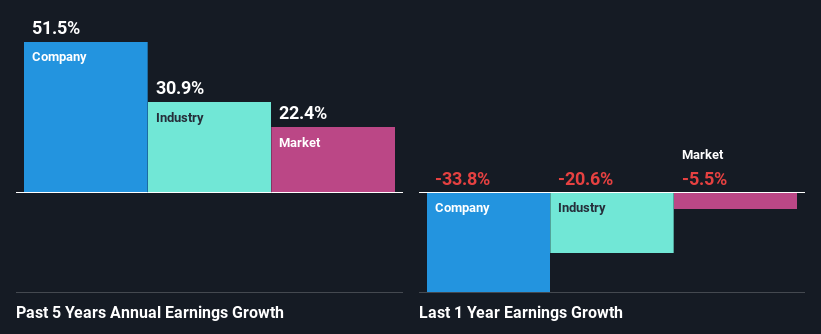Lundin Gold’s (TSE:LUG) stock is up by a considerable 13% over the past month. Given the company’s impressive performance, we decided to study its financial indicators more closely as a company’s financial health over the long-term usually dictates market outcomes. In this article, we decided to focus on Lundin Gold’s ROE.
Return on equity or ROE is an important factor to be considered by a shareholder because it tells them how effectively their capital is being reinvested. Put another way, it reveals the company’s success at turning shareholder investments into profits.
See our latest analysis for Lundin Gold
How To Calculate Return On Equity?
The formula for return on equity is:
Return on Equity = Net Profit (from continuing operations) ÷ Shareholders’ Equity
So, based on the above formula, the ROE for Lundin Gold is:
12% = US$109m ÷ US$926m (Based on the trailing twelve months to June 2023).
The ‘return’ is the profit over the last twelve months. Another way to think of that is that for every CA$1 worth of equity, the company was able to earn CA$0.12 in profit.
What Has ROE Got To Do With Earnings Growth?
So far, we’ve learned that ROE is a measure of a company’s profitability. Depending on how much of these profits the company reinvests or “retains”, and how effectively it does so, we are then able to assess a company’s earnings growth potential. Assuming all else is equal, companies that have both a higher return on equity and higher profit retention are usually the ones that have a higher growth rate when compared to companies that don’t have the same features.
Lundin Gold’s Earnings Growth And 12% ROE
To start with, Lundin Gold’s ROE looks acceptable. On comparing with the average industry ROE of 9.6% the company’s ROE looks pretty remarkable. This certainly adds some context to Lundin Gold’s exceptional 52% net income growth seen over the past five years. We believe that there might also be other aspects that are positively influencing the company’s earnings growth. Such as – high earnings retention or an efficient management in place.
Next, on comparing with the industry net income growth, we found that Lundin Gold’s growth is quite high when compared to the industry average growth of 31% in the same period, which is great to see.
Earnings growth is an important metric to consider when valuing a stock. The investor should try to establish if the expected growth or decline in earnings, whichever the case may be, is priced in. By doing so, they will have an idea if the stock is headed into clear blue waters or if swampy waters await. Is Lundin Gold fairly valued compared to other companies? These 3 valuation measures might help you decide.
Is Lundin Gold Making Efficient Use Of Its Profits?
Lundin Gold’s significant three-year median payout ratio of 67% (where it is retaining only 33% of its income) suggests that the company has been able to achieve a high growth in earnings despite returning most of its income to shareholders.
Along with seeing a growth in earnings, Lundin Gold only recently started paying dividends. Its quite possible that the company was looking to impress its shareholders. Our latest analyst data shows that the future payout ratio of the company is expected to drop to 41% over the next three years. The fact that the company’s ROE is expected to rise to 25% over the same period is explained by the drop in the payout ratio.
Conclusion
In total, we are pretty happy with Lundin Gold’s performance. In particular, its high ROE is quite noteworthy and also the probable explanation behind its considerable earnings growth. Yet, the company is retaining a small portion of its profits. Which means that the company has been able to grow its earnings in spite of it, so that’s not too bad. With that said, the latest industry analyst forecasts reveal that the company’s earnings growth is expected to slow down. Are these analysts expectations based on the broad expectations for the industry, or on the company’s fundamentals? Click here to be taken to our analyst’s forecasts page for the company.
Have feedback on this article? Concerned about the content? Get in touch with us directly. Alternatively, email editorial-team (at) simplywallst.com.
This article by Simply Wall St is general in nature. We provide commentary based on historical data and analyst forecasts only using an unbiased methodology and our articles are not intended to be financial advice. It does not constitute a recommendation to buy or sell any stock, and does not take account of your objectives, or your financial situation. We aim to bring you long-term focused analysis driven by fundamental data. Note that our analysis may not factor in the latest price-sensitive company announcements or qualitative material. Simply Wall St has no position in any stocks mentioned.
Credit: Source link
